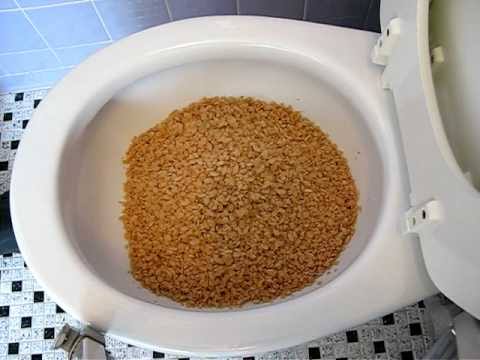On this page on the next paragraphs yow will discover additional high-quality insights concerning Think Twice Before Flushing Food Down Your Toilet.

Introduction
Many people are frequently faced with the problem of what to do with food waste, particularly when it involves leftovers or scraps. One usual concern that emerges is whether it's okay to purge food down the bathroom. In this article, we'll explore the reasons that people may consider purging food, the consequences of doing so, and alternate approaches for proper disposal.
Reasons that people might think about purging food
Absence of awareness
Some individuals may not recognize the potential harm caused by flushing food down the toilet. They might erroneously believe that it's a harmless technique.
Convenience
Purging food down the commode may look like a quick and simple remedy to taking care of unwanted scraps, especially when there's no close-by garbage can available.
Negligence
Sometimes, individuals might just select to flush food out of sheer idleness, without taking into consideration the repercussions of their activities.
Repercussions of flushing food down the commode
Environmental effect
Food waste that ends up in waterways can add to air pollution and harm marine communities. In addition, the water utilized to purge food can strain water sources.
Plumbing concerns
Flushing food can bring about blocked pipes and drains pipes, causing costly plumbing repairs and inconveniences.
Types of food that must not be purged
Fibrous foods
Foods with coarse textures such as celery or corn husks can get entangled in pipelines and create clogs.
Starchy foods
Starchy foods like pasta and rice can absorb water and swell, leading to obstructions in pipelines.
Oils and fats
Greasy foods like bacon or food preparation oils need to never ever be flushed down the toilet as they can solidify and cause blockages.
Proper disposal methods for food waste
Using a garbage disposal
For homes furnished with waste disposal unit, food scraps can be ground up and flushed through the plumbing system. Nonetheless, not all foods appropriate for disposal in this fashion.
Recycling
Certain food product packaging materials can be reused, reducing waste and reducing ecological effect.
Composting
Composting is an environmentally friendly way to throw away food waste. Organic products can be composted and made use of to enrich soil for horticulture.
The relevance of correct waste administration
Lowering environmental injury
Appropriate waste monitoring techniques, such as composting and recycling, assistance reduce contamination and protect natural deposits for future generations.
Shielding plumbing systems
By staying clear of the technique of flushing food down the commode, home owners can stop expensive pipes repairs and maintain the honesty of their pipes systems.
Verdict
In conclusion, while it might be alluring to flush food down the bathroom for ease, it's important to recognize the potential consequences of this activity. By embracing appropriate waste monitoring methods and throwing away food waste responsibly, individuals can contribute to healthier plumbing systems and a cleaner atmosphere for all.
FLUSH FOOD DOWN THE TOILET?
FLUSHING FOOD CAN CAUSE BLOCKED DRAINS IN YOUR HOME
All of the plumbing fixtures in your home are connected to the same sewer pipe outside of your home. This outdoor sewer pipe is responsible for transporting all the wastewater from your home to the Council sewer mains. Even small pieces of food that go down the kitchen sink can cause problems for your sewer. It should therefore be obvious that flushing larger bits of food, such as meat, risks a clog in either the toilet itself or the sewer pipes. Flushing greasy food is even more problematic because oil coagulates when it cools, coating the interior lining of your pipes.
THE TOILET IS NOT A BIN
Food isn’t the only thing that people shouldn’t be flushing down the toilet. People use the toilet to dispose of all kinds of things such as tampons, makeup wipes, dental floss, kitty litter and even underwear. Water goes to great lengths to educate residents about the high costs and stress placed on wastewater treatment systems simply from people flushing the wrong stuff down the toilet. It costs taxpayers millions of dollars each year, and homeowners thousands in blocked drain repairs.
FLUSHING FOOD IS A WASTE OF WATER
Flushing food is a waste of our most precious resource - water. In June this year Level 1 water restrictions were introduced to protect water supply from drought conditions. Much of New South Wales continues to be affected by prolonged drought with recent figures revealing up to 97 per cent of the state remains in drought. Depending on whether you have a single or dual flush toilet, every single flush uses between five and 11 litres of water. In the current climate this is a huge amount of water to be wasting on flushing food that should be placed in the bin (or better yet, the compost).
https://www.jabplumbingsolutions.com.au/blog/can-you-flush-food-down-the-toilet

As a devoted person who reads on Flushing Food Down the Toilet?, I figured sharing that excerpt was sensible. Sharing is caring. Helping others is fun. Thanks so much for going through it.
Booking